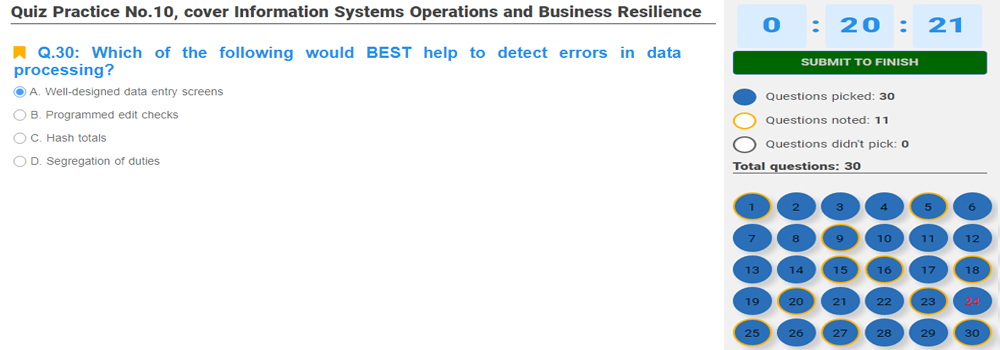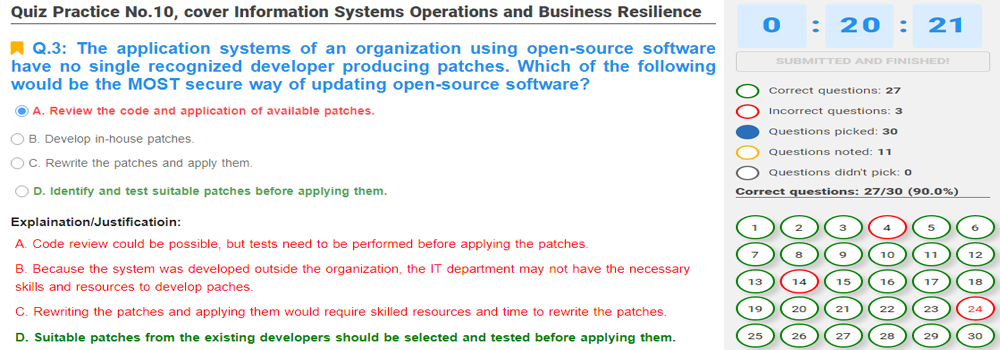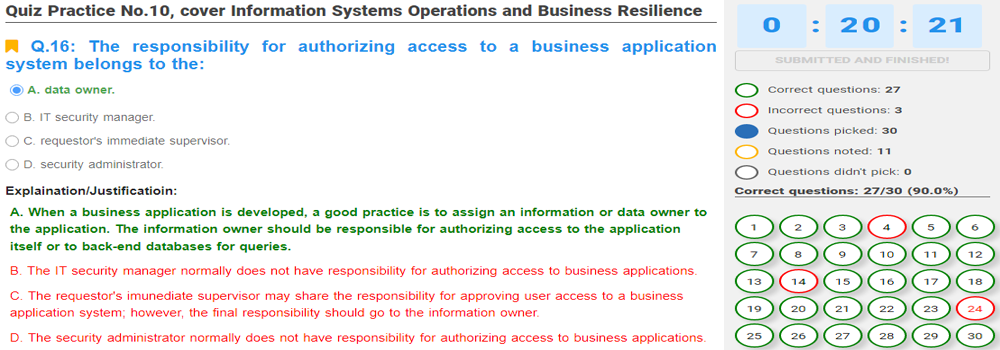[200-301 DUMP UPDATED JULY, 2024] CCNA Cert code: 200-301, Questions of the exam: 120, Minutes of the exam: 120, Correct to pass: 80%.
[Study Guide Review, Updated JUNE, 2024] CCNA Cert code: 200-301, Questions of the exam: 120, Minutes of the exam: 120, Correct to pass: 80%.
[200-301 DUMP UPDATED MAY, 2024] CCNA Cert code: 200-301, Questions of the exam: 120, Minutes of the exam: 120, Correct to pass: 80%.
[Study Guide Review, Updated APRIL, 2024] CCNA Cert code: 200-301, Questions of the exam: 120, Minutes of the exam: 120, Correct to pass: 80%.
[200-301 DUMP UPDATED MARCH, 2024] CCNA Cert code: 200-301, Questions of the exam: 120, Minutes of the exam: 120, Correct to pass: 80%.
[Study Guide Review, Updated FEBRUARY, 2024] CCNA Cert code: 200-301, Questions of the exam: 120, Minutes of the exam: 120, Correct to pass: 80%.
SOME NOTES ABOUT CCNA:
CCNA [200-301] is an important and mandatory certification on your path to becoming an expert in your field.
To get this certificate, you need to firmly and confidently grasp the content listed below. Then, you need to pass the exam directly on CISCO's system. This exam has a duration of 120 minutes, with 120 questions. You need to answer correctly at least 80% of the total questions on the exam.
Below are the contents that you need to grasp firmly and confidently before registering to take the exam on CISCO's system:
1. Introduction to Networking.
1.1. Introduction to TCP/IP Networking.
1.2. Fundamentals of Ethernet LANs.
1.3 Fundamentals of WANs and IP Routing.
2. Implementing Ethernet LANs.
2.1 Using the Command-Line Interface.
2.2 Analyzing Ethernet LAN Switching.
2.3 Configuring Basic Switch Management.
2.4 Configuring and Verifying Switch Interfaces.
3. Implementing VLANs and STP.
3.1 Implementing Ethernet Virtual LANs.
3.2 Spanning Tree Protocol Concepts.
3.3 RSTP and EtherChannel Configuration.
4. IPv4 Addressing.
4.1 Perspectives on IPv4 Subnetting.
4.2 Analyzing Classful IPv4 Networks.
4.3 Analyzing Subnet Masks.
4.4 Analyzing Existing Subnets.
5. IPv4 Routing.
5.1 Operating Cisco Routers.
5.2 Configuring IPv4 Addresses and Static Routes.
5.3 IP Routing in the LAN.
5.4 Troubleshooting IPv4 Routing.
6. OSPF.
6.1 Understanding OSPF Concepts.
6.2 Implementing OSPF.
6.3 OSPF Network Types and Neighbors.
7. IP Version 6.
7.1 Fundamentals of IP Version 6.
7.2 IPv6 Addressing and Subnetting.
7.3 Implementing IPv6 Addressing on Routers.
7.4 Implementing IPv6 Routing.
8. Wireless LANs.
8.1 Fundamentals of Wireless Networks.
8.2 Analyzing Cisco Wireless Architectures.
8.3. Securing Wireless Networks.
8.4. Building a Wireless LAN.
GOODLUCK TO YOU!!!




